
Australia saw a very ‘mixed bag’ as far as the aerial firefighting season went for the 2023-2024 season down under. While the season was as expected in some areas of predictions, it was worse than predicted in other states.
If you divide Australia into the East and West coasts, there is a stark contrast in the number and severity of fires and the equipment and its numbers. For those not familiar with the size of the country, much like the U.S., a cross-country flight can take five hours from Sydney to Perth, so it’s no small feat when assets are needed on one side or the other. That being said, both ground and airborne crews did just that multiple times this season.
Australia has continued to maintain a fleet of 150 aircraft and helicopters across the five states and two territories. A fleet size that can be boosted should the need arise. While there was no additional equipment needed for the heavy-hitting, large-capacity large air tankers (LATs) this year, The mix of LATs and their locations were also similar, the main differences being the numbers of the types within the various states and territories this season.
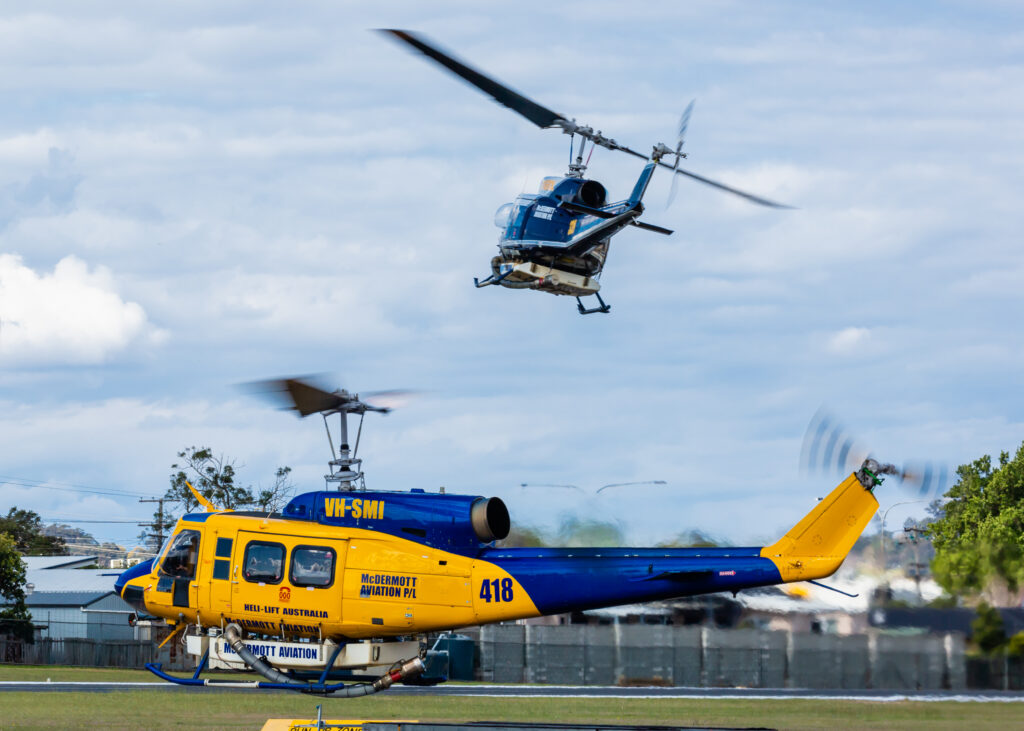
Western Australia
Western Australia saw its share of large blazes due to extremely dry weather leading up to summer. Areas like Mandurah, Gin Gin, and Waroona were impacted by large blazes this season. Sadly, it appears that arsonists deliberately lit several of these blazes. The state continued to fight fires into early April, greatly impacting people and properties. Western Australia called upon assets from the New South Wales Rural Fire Service (NSWRFS) this season to assist with laying retardant lines and direct attack on some blazes. The NSW RFS provided its Lockheed C-130H, flown by Coulson Aviation, and the state-owned Boeing 737 Fireliner, again crewed and operated by Coulson Aviation.
This was also the first season that a Coulson C-130H was based at Busselton, south of the capital city of Perth. The aircraft was contracted with the Western Australian Department of Fire and Emergency Services for the season. Other assets deployed within the state from NSW included the Conair/Fieldair operated RJ85 Bomber 164 and Bomber 137, a Boeing 737 Fireliner again operated by Coulson Aviation.
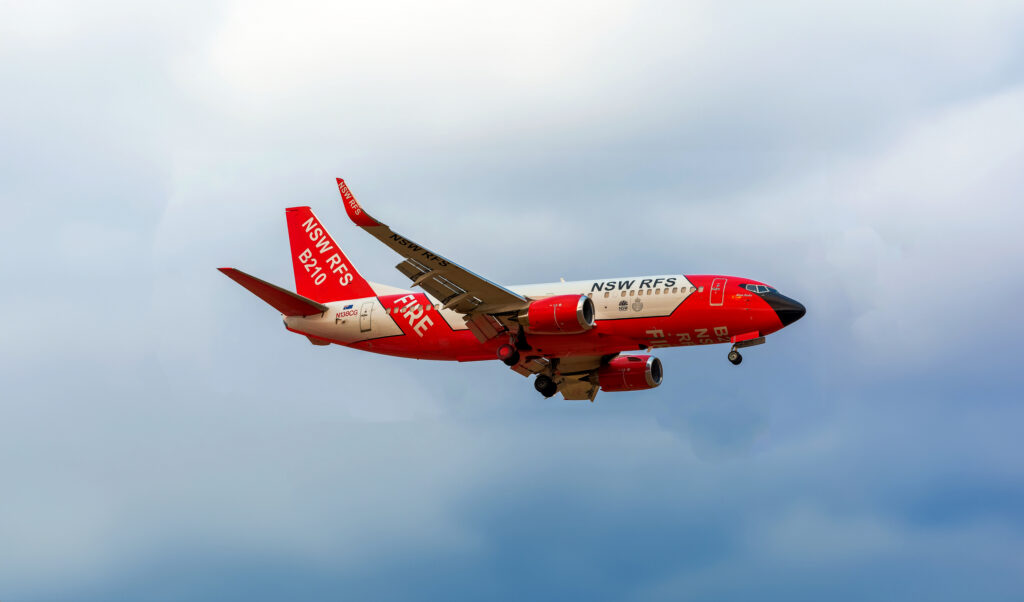
Pays Aviation supplied an AT-802 Air Tractor in January to Western Australia (WA) to support operations, which was also the same type used by Dunn Aviation on its contracted operations across the state. Dunn Aviation has provided SEAT aircraft for the state for several years now. Air Affairs provided fire scanning in their Beech B200T and the NSW RFS with the Cessna Citations. AgAir Logistics from Stawell in Victoria flew their Cessna 525 CitationJet CJ1s Birddogs to support LAT operations during the year. Other notable fixed-wing assets included a General Aviation Maintenance (GAM) Turbo Commander and Helicopter Logistics Quest Kodiak in the Birddog roles.
The Department of Biodiversity, Conservation, and Attractions (DBCA) uses American Champion 8GCBC Scouts as fire spotter aircraft for forest patrols in the southwest of WA, flying across areas set according to fire weather conditions. These aircraft are located across the state for fire spotting operations, ten of which are working throughout the season.
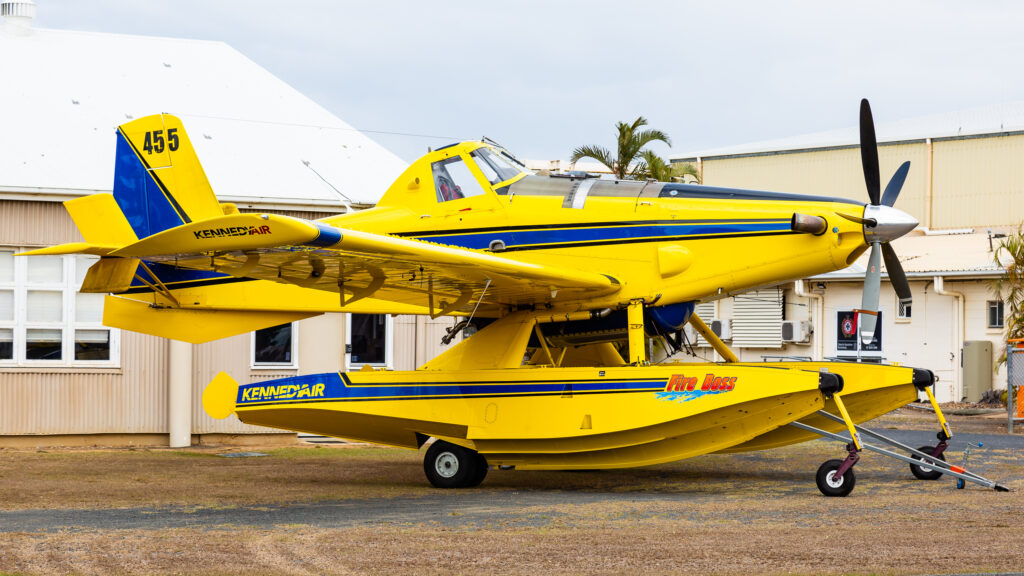
Helicopter operations in the West were supported during the season by Bell 214s and Blackhawks. McDermott Aviation supplying several Bell 214B-1 on contract with six stationed across the state in addition to aircraft provided to other states by McDermott throughout the season. United Aero from Camden in NSW provided two Blackhawks from Pickering Aviation in Denton, Texas, USA. Both machines were fitted with Australian-designed and manufactured Helitak FT4500 belly tanks. The two Helitaks and the Bell 214s were utilized a lot this season, supporting firefighting operations on the ground.
As with many other states, the Airbus helicopters Squirrels were prolific in the Firebird roles, with helicopter Logistics and McDermott Aviation providing aircraft around Australia. Another interesting type in use with WA is the Airbus Helicopters Dauphin. Three of the types are contracted within the state and provided by McDermott Aviation.
New South Wales
New South Wales had predicted a season which was to be as bad as the 2019-2020 Black Summer. With drought across much of the state, the shift out of a La Nina weather system, which saw record-breaking rain, meant high growth across the state before the shift into the dry season. This didn’t mean that there wasn’t fire within NSW. A fire known as the Sandon River blaze burnt out more than 3400 hectares near the coast. The fire near the town of Wooli was burnt in a southerly direction for the most part.
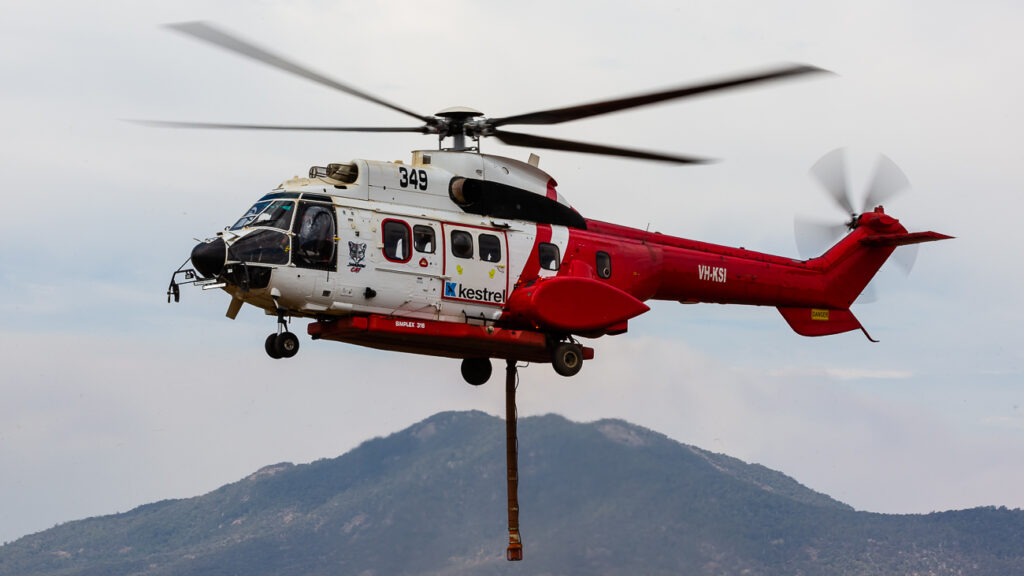
The fleet of aircraft in NSW was also a familiar set. The NSWRFS-owned fleet comprises a Boeing 737 Fireliner LAT and two Cessna Citation Firescans equipped with advanced line scanning and IR capabilities for fire mapping and monitoring. These aircraft are backed up on the rotary side by a first of its type in Australia, a Boeing CH-47 Chinook, and six Bell 412 helicopters. This fleet was supplemented by the Coulson Aviation C-130H Bomber 133 and the National LAT Boeing 737 Fireliner Bomber 137. Conair and Field Air provided an RJ85 based in Dubbo for the season.
As in several other fire seasons, some aircraft were used in other states and territories. In February, several NSW-based machines were positioned in Victoria when a large blaze broke out in the central north. NSW provided its fleet for other states as needed resources when NSW was not under direct fire threat.
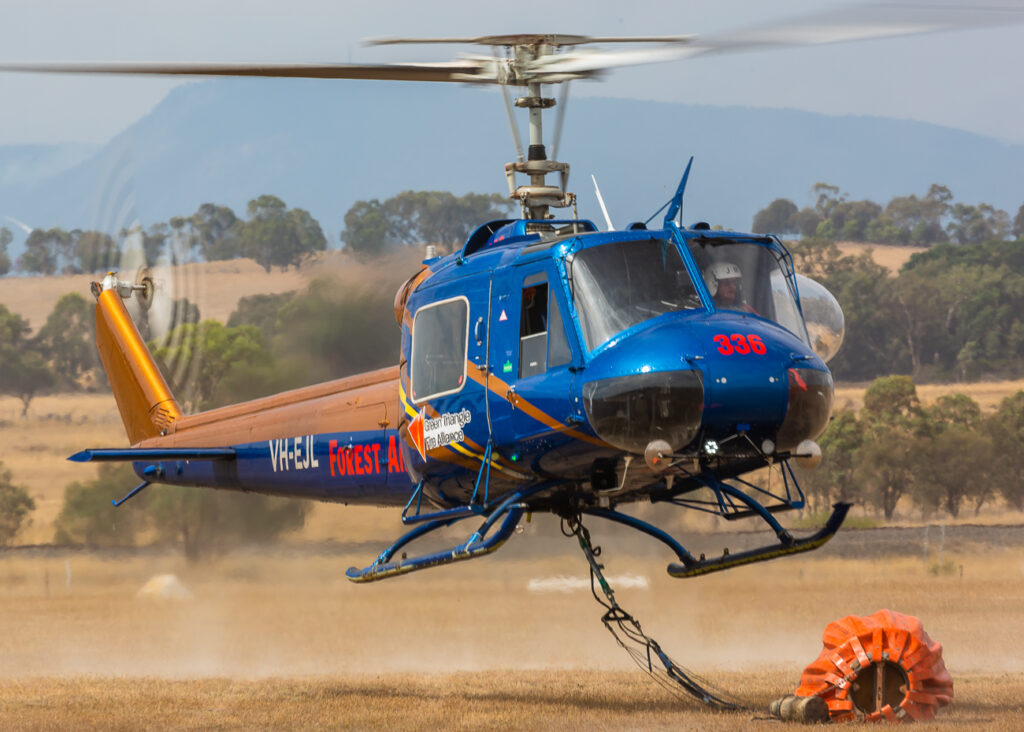
Australian Capital Territory (ACT)
This season, the Australian Capital Territory (ACT) saw a change of operator. Kestrel Aviation secured the contract for the supply of two Bell 412s to look after the small “state within a state.” Microflite, a fellow Victorian operator, Joined Them, providing a single AS350 for firebird operations. The three machines operate from the Hume firebase throughout the season.

Victoria
Victoria saw several changes in its fleet makeup this season. Two LATS were on contract, with the one shared between the Victorian and Queensland governments, as their fire danger periods work opposite each other. The Conair-owned and FieldAir-operated Q400 arrived in the state after its contract period in Queensland, which was heavily utilized during the northern season. It was joined for the first time by a second Q400, positioned alongside its counterpart at Avalon Airport.
SEAT aircraft were also stationed across the state and moved to where required throughout the season. Operators, including FieldAir and AgAir, did their share of the work on fires across the state. Some were even dispatched to help with fires on the South Australian/Victorian border. Victoria relies heavily on the AirTractor AT-802, with high-country-based Alpine Airwork providing the exception with two turbine-powered PZL M18 Dromaders. Pay also provided an AirTractor on contract at the Mansfield firebase in the state’s High country.

Victoria’s rotary fleet also saw a change this year as Erickson Air-Crane, in conjunction with Kestrel Aviation, brought two of the S-64Fs into the docks in Melbourne before they were positioned at Moorabbin and Essendon airports, respectively, making a welcome return to two of these well-seasoned machines in the state.
Also positioned at Essendon was a Kestrel Airbus AS-332 Super Puma, which undertook the night firefighting program in conjunction with Microflite, flying their Airbus H135 in the Firebird role.
Across the state, McDermott Aviation deployed several Bell 214 and Bell 214STs on contracts. At the same time, Microflite provided Bell 212, 412, Airbus Helicopters EC-120, H135, and AS350s, Paton Air, Osbourne Aviation Services, Professional Helicopter Services, and United Aero provided AS350s; Kestrel Aviation provided Bell 212, 412, Blackhawk, and the Super Puma. Forest Air also provided a Bell 204, among some aircraft involved in the aerial firefighting effort for seasons 2023-2024 in Victoria.

Many would come together to fight a large blaze in the state’s central north, which would later consume 29,500 hectares (73,000 acres), and saw all of the state’s large type 1 helicopters working on the fire alongside many other type 2 and 3 machines. The fire started in bushland near Bayindeen east of Ararat and grew so large that it began creating spot fires 10 kilometers ahead of the main fire. Operating from bases in Ballarat and Ararat, this was the first time in many years that, at one time, thirteen different helicopters, along with the locally based LATS and loaned LATS from the NSW RFS, worked alongside SEATs and firescan aircraft to bring the blaze under control.
Other large fires would also start in the Grampians National Park, requiring a massive aircraft-based response and ground units to control it. NSW-based aircraft and helicopters were positioned in Victoria to cover the large numbers of resources utilized on these fires. Touchdown Helicopters and McDermott Aviation sent their Blackhawk and Bell 214s to Essendon Airport to cover the urban fringes during this high-temperature period.
Victoria was, however, spared from a large fire this season as seen in previous years, thanks in part to higher rainfall than predicted.
Queensland
The Queensland Rural Fire Service saw an increase in its fleet this year and the addition of a new type to be based in the state. Queensland and Victoria now share a locally based LAT, the Q400, operated by Conair/FieldAir. This aircraft starts the season based in Bundaberg airport, flying as Bomber 141. It was joined by the AgAir-operated Birddog Commander, acting as lead aircraft. Sadly on November 4 this aircraft along with its three crew perished in a crash near Cloncurry in the north of the state. The ATSB s still investigating the crash, however preliminary report published in February 2024 indicated the crew could have been suffering from hypoxia. The investigation’s full report will be released in due course.

Queensland-based operation Precision Aerial provided several AT-802s on contract, with a number of them operating within the state and supporting firefighting operations. The company was busy with their Fireboss versions operating on fires in Mount Isa region. Precision also sent their aircraft into NSW as far south as Grafton to assist with fires.
Joining the rotary fleet this season in the state was a Type 1 helicopter, a Blackhawk operated by South Australian-based company Aerotec. This was the second season a Blackhawk had worked on a contract for the state.
McDermott Aviation, which operates from its head office on the Sunshine Coast, had several of its Bell 214s on contract this year. At the same time, other operators, including Brisbane-based Executive Helicopters, supplied the AS350 for firebird work and an EC-130 for similar operations.
Tasmania
This season, the small southern island of Tasmania saw milder conditions limiting the size and number of large blazes in the state. Kennedy Air, a Gunnedah NSW-based operation, provided several Fireboss AT-802s on contract during the season. The company also utilized a Commander 500S on contract for fire support duties. FieldAir contributed some of its AirTractor AT-802 fleet, with two in Fireboss configuration and two on conventional undercarriage.
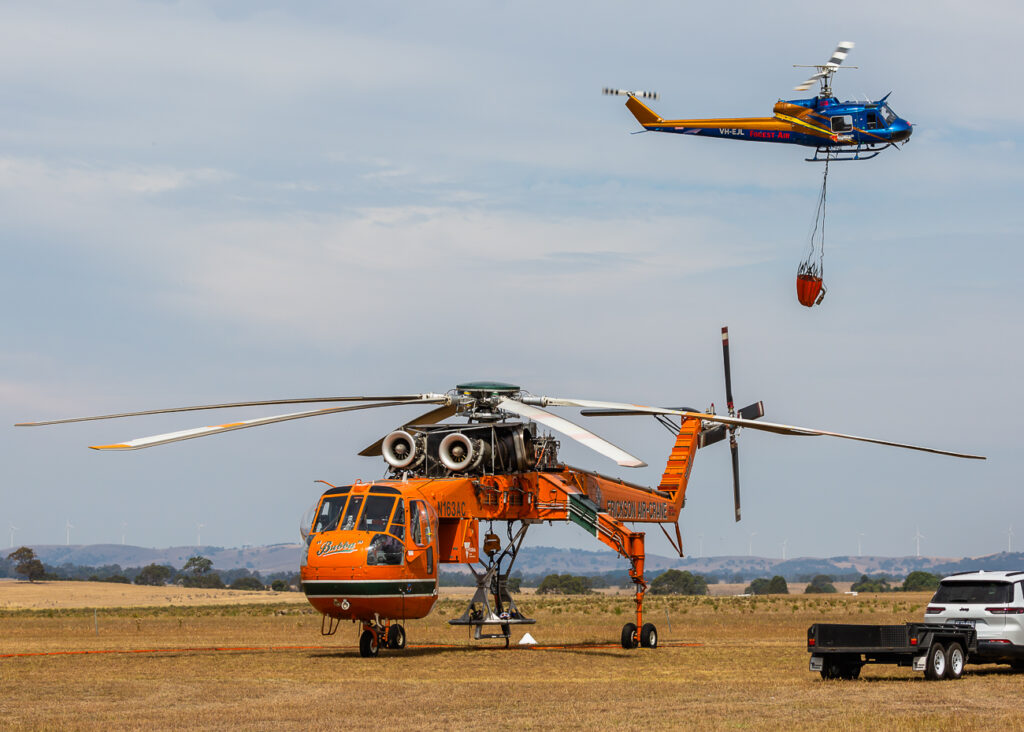
The state’s rotary fleet was spread across multiple operators with different types of equipment. Helitrek again provided its BK-117, McDermott Aviation supplied Bell 214s and Microflite, and Osbourne Aviation provided AS350s.
South Australia
South Australia continues to rely on a near sole source for its aerial firefighting fleet. Parafield South Australia-based operation Aerotech claims the lion’s share of the contracts. The company has provided aircraft and helicopters to the local fire agency for several years. Aerotech continues to operate from the three fire bases for most of the season. The Claremont base near the Adelaide Hills sees multiple examples of the AirTractor AT-802, joined by Cessna 208 Caravan air attack and observation platforms.
The rotary fleet also operates from the same locations. Aerotech contributed to the UH-60 Blackhawks, EC130, EC-135, and AS350s this season, joined by a Helifarm AS350s. Again this season, the locally based fixed-wing and rotary fleets and Victorian-based operators worked on joining border fires.
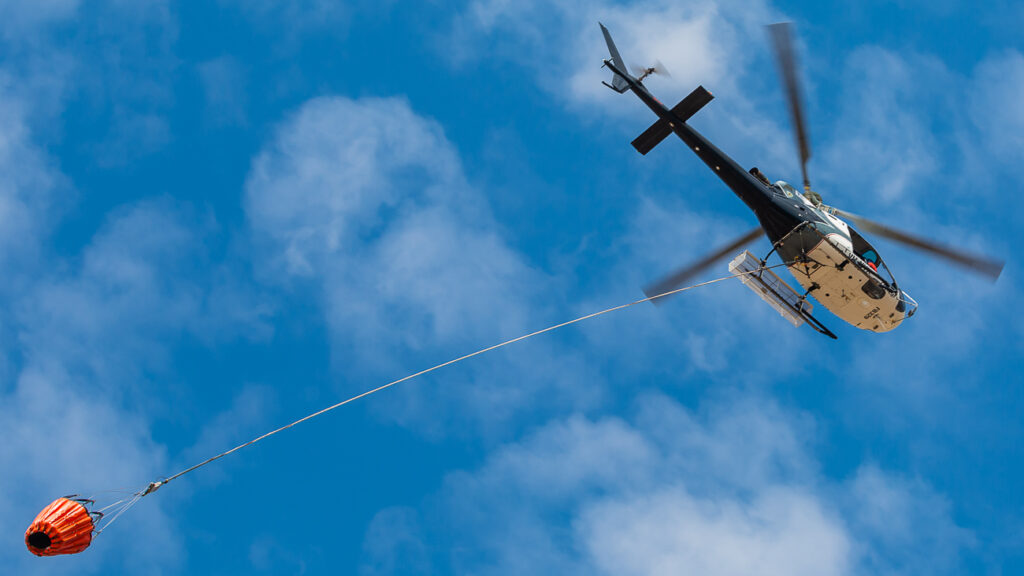
Northern Territory
The Northern Territory (NT), which covers a large area in the country’s North, relies on a smaller fleet of fixed-wing and rotary assets. The main firebase at Batchelor, which was built during World War II, hosts companies like local operator XO Aviation, which provide AirTractor AT-802s, was joined by Heli-Muster and Aerotech, which operated AS350s in both firebombing and air attack surveillance platforms.
While Australia is a large country geographically, it is a small one regarding aerial firefighting operators, with its local-based operators expanding and upgrading their fleets to continue to improve what is on offer. Large helicopters have been coming onto the Australian fire contracts quickly. With the Bell 214ST and Blackhawks leading the way. Australian operators are hungry to expand their fleet to cater to overseas operations. Operators like McDermott Aviation, XO Aviation, Aerotech, and Pay’s are all looking at providing the aircraft for the Australian contracts and switching them to go and work for the Northern summer season.

Next season, we will hopefully see the first of McDermott Aviation’s recently converted ex-German Air Force Transall C-160s at work (pending CASA certification) with the first fixed-wing tank created by Helitak Firefighting Equipment. The 3000-gallon tank is being fitted to allow the C-160s to operate on contracts in Europe, further cementing the Australian company’s growth and expansion into fixed-wing firefighting operations.

